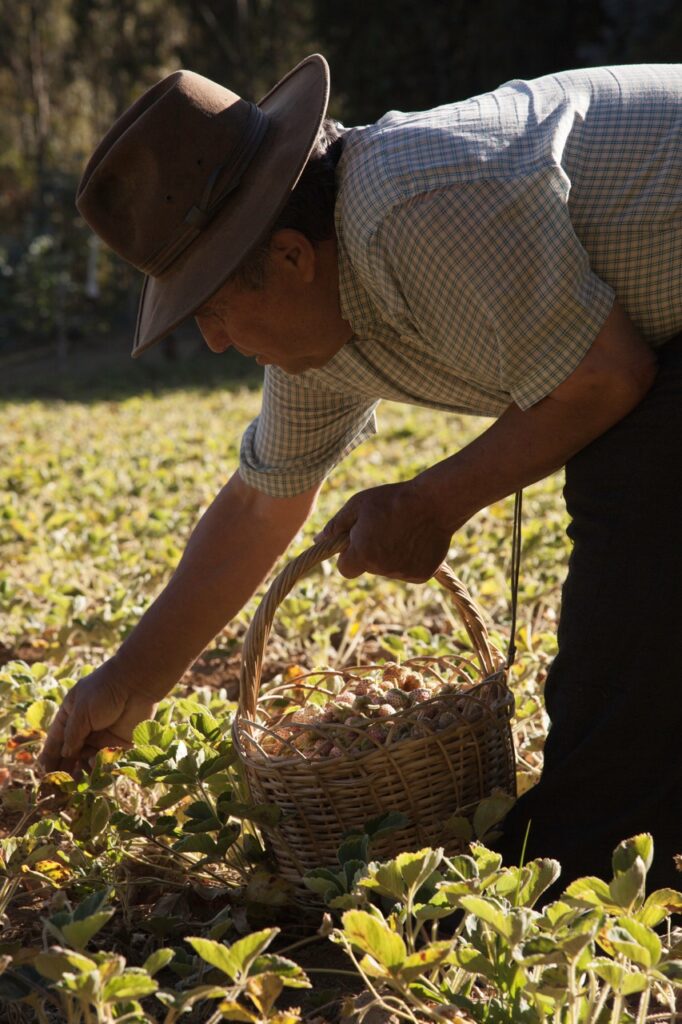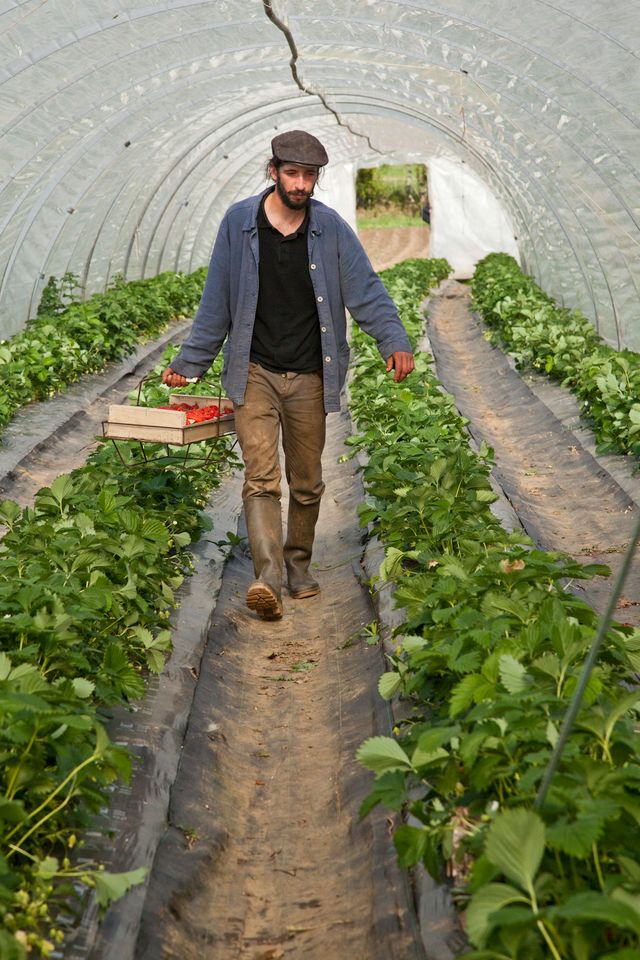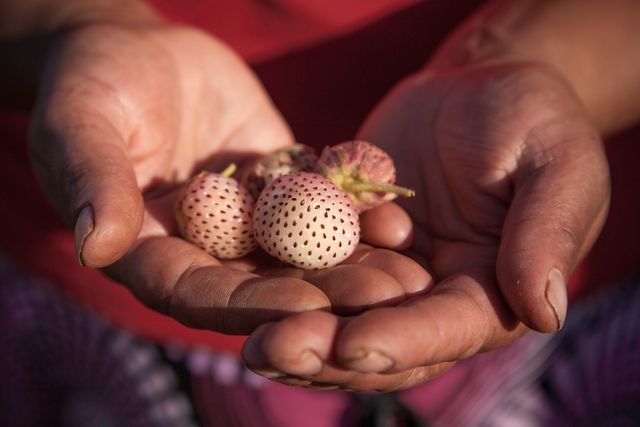Next time you bite into a juicy, ripe, red strawberry, spare a thought for the three centuries of history, exploration, and botanical adventure origins that bring this seasonal staple to your table. The story starts in Chile. With espionage.
Where the Strawberry Comes From
As the sun rises on the Chilean Cordillera Nahuelbuta, “the mountain range of the great puma,” songbirds and the crowing of roosters announce the dawn. A field of white strawberries with pale blooms awaits the gold-hued sunlight. Chilean poet Gabriela Mistral marveled at the fragrance of the region’s famed strawberry, white, rather than red, with red achenes or seeds: “A delicate scent flies away shy and pleasant, thin as the breeze, intimate as the breath.” The Chilean countryside is fragrant with this enticing scent during New Year’s celebrations.
It is undoubtedly this same aroma that captivated French explorer Amédée-François Frézier (1682-1773) when he arrived in present-day Conception in the early 1700s. And it’s the first clue that hints at how the white strawberry of Chile, journeyed across oceans and arrived in Europe.

The Birth of a Berry
Hired to spy on Spanish ports and fortifications on the Chilean coast, the young engineer embodied the spirit of the Enlightenment. Guided by a thirst for knowledge, he was equally engaged in mathematics, art, and botany. In the 18th century, minerals, plants, and animals were of utmost interest to intellectual travelers like Frézier. South America, a region mostly unknown to Europeans, brimmed with possibilities for curious botanists. Frézier and his crew enthusiastically collected, dried, and documented botanical samples to stock the ship’s herbarium. But their hope was to do more than preserve dried samples. There was a constant quest to bring back plants useful for medicine, food, or craft which led to the introduction––and later assimilation––of species from around the world.
Near Concepción, Frézier gathered and chronicled remarkable strawberry plants that grew in the area. One that he described as: “Fragaria chiliensis, fructu maximo, foliis carnosis, hirsutis, vulgo frutilla.” In other words, “Chilean strawberries with large fruits and fleshy and hairy leaves, which are commonly called Frutillas.” In his book, Relation de Voyage, he writes, “They cultivate whole fields of a species of strawberry different from ours … Its fruits are usually as big as a walnut and sometimes as big as a hen’s egg. They are of a whitish red color and a little less delicate to the taste than our wild strawberries.”

Bringing the Strawberry to Europe
At the expense of the crew’s freshwater rationing and against the odds, Frézier’s crew arrived in Marseille, France on August 17, 1714, with five plants that miraculously had survived the six-month voyage. Fragaria chiliensis quickly spread throughout the botanical gardens of France, England, and Holland. Unfortunately, they did not produce flowers or fruit until one day, at the westernmost tip of Brittany, France, facing the Atlantic, the Chilean white strawberry happened to be growing in the vicinity of Fragaria virginiana. This small, red, wild variety, grew in abundance in the meadows and forests of North America and was cultivated by Native Americans. Thanks to another explorer, navigator Jacques Cartier, it travelled from Virginia to Europe.
A new hybrid was born. Fragaria ananassa, the pineapple strawberry, boasts the size of the Chilean and the color of a Virginian strawberry. It is the first of the modern strawberry plants, whose red fruits now delight us throughout the world in summer.

The Continuation of a Strawberry Legacy
To this day, Brittany holds a special place in its heart for strawberries, so much so that it has its own Strawberry Museum in Plougastel-Daoulas. Not surprising, since the mild climate of this peninsula in Brittany makes it ideal for growing strawberries whether in the open ground or in hanging containers. Several varieties are popular including the Ciflorette, Charlotte, Mara des bois, and Gariguette.
Story by Chloé Batissou and Esha Chiocchio
Photography by Esha Chiocchio
Subscribe to TABLE Magazine‘s print edition.
